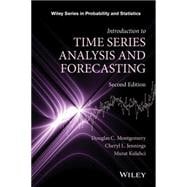Praise for the First Edition
"…[t]he book is great for readers who need to apply the methods and models presented but have little background in mathematics and statistics." -MAA Reviews
Thoroughly updated throughout, Introduction to Time Series Analysis and Forecasting, Second Edition presents the underlying theories of time series analysis that are needed to analyze time-oriented data and construct real-world short- to medium-term statistical forecasts.
Authored by highly-experienced academics and professionals in engineering statistics, the Second Edition features discussions on both popular and modern time series methodologies as well as an introduction to Bayesian methods in forecasting. Introduction to Time Series Analysis and Forecasting, Second Edition also includes:
- Over 300 exercises from diverse disciplines including health care, environmental studies, engineering, and finance
- More than 50 programming algorithms using JMP®, SAS®, and R that illustrate the theory and practicality of forecasting techniques in the context of time-oriented data
- New material on frequency domain and spatial temporal data analysis
- Expanded coverage of the variogram and spectrum with applications as well as transfer and intervention model functions
- A supplementary website featuring PowerPoint® slides, data sets, and select solutions to the problems
Introduction to Time Series Analysis and Forecasting, Second Edition is an ideal textbook upper-undergraduate and graduate-levels courses in forecasting and time series. The book is also an excellent reference for practitioners and researchers who need to model and analyze time series data to generate forecasts.








